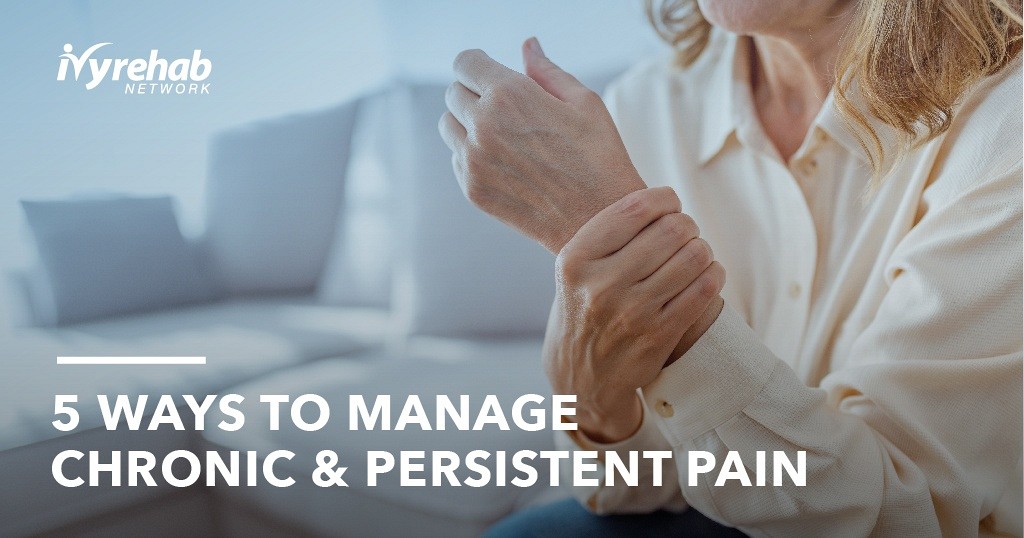Chronic pain doesn’t just affect your body—it affects your entire life. From everyday tasks like cooking and cleaning to the joys of spending time with family or engaging in hobbies, ongoing pain can feel like a heavy cloud that never lifts.
The good news is there are alternative treatments to pain therapy, including physical therapy. While medication can help mask the symptoms, it’s not the only answer. With the right knowledge and approach, physical therapy provides sustainable strategies to manage pain—strategies that support both your physical and emotional well-being. Physical therapy changes the game for chronic pain patients and empowers patients with knowledge of how the body and pain works. At Ivy rehab, our therapy services assess and treat a variety of conditions that cause pain, including acute injuries, rehab after surgery, and chronic illnesses.
October is marks National Physical Therapy Month and Spine Health Awareness Month, making it the perfect time to explore holistic, evidence-based ways to reduce chronic pain and reclaim your quality of life.
The Prevalence of Chronic Pain
Did you know that more than 50 million U.S. adults live with chronic pain? According to the CDC, about 20 million of them experience high-impact chronic pain—pain that limits daily life and work activities. It’s one of the leading causes of disability and a major contributor to the opioid crisis and rising healthcare costs.
An estimated 75 percent of Americans experience lower back pain at some point in their life. Back pain is also a leading cause of disability for young and old, making spinal health and chronic pain an important topic of conversation.
The spine, composed of nerves, muscles, and ligaments, is under constant demand and sends signals to other parts of the body to help your body function properly. Maintaining good spinal health greatly impacts your overall quality of life, regardless of whether you do manual labor, stand on your feet all day, or even sit behind a computer screen.
Many spinal conditions and spinal deterioration also cause chronic neck and back pain, including:
- Degenerative disc disease
- Herniated and bulging discs
- Spinal stenosis
- Sciatica
- Arthritis
- Pinched nerves
- Shooting pain in arms or legs
- Failed neck or back surgery
Understanding the cause of your pain is the first step. With proper care, including physical therapy, many people can avoid surgery and reduce or even eliminate the need for long-term medication.
5 Effective Strategies to Manage Chronic Pain Naturally
1. Educate Yourself About Your Condition
Empower yourself by learning everything you can about your diagnosis, triggers, and treatment options. Ask questions, get second opinions, and don’t hesitate to explore non-invasive and holistic therapies. Understanding your pain helps reduce fear and gives you greater control over your health journey.
2. Stay Active—Movement Is Medicine
Physical inactivity often worsens chronic pain, leading to stiffness and muscle weakening. Instead, aim for gentle, consistent movement. Walking, stretching, yoga, and light resistance exercises keep joints lubricated, improve blood flow, and support spinal alignment. A strong spine enhances digestion, circulation, posture, and balance.
3. Work with a Licensed Physical Therapist
A physical therapist (PT) is a movement expert trained to treat chronic pain and mobility issues. They’ll guide you through targeted exercises, posture correction, and daily habit adjustments. Many patients find that PT helps reduce reliance on medication and improves long-term quality of life. Plus, physical therapy is safe, customized, and often covered by insurance.
4. Shift Focus Away from the Diagnosis
Your condition doesn’t define you. While it’s important to understand your medical history, a positive mindset and proactive lifestyle changes are key to progress. Focus on what you can do. Small wins—like improving flexibility or reducing pain levels—can lead to major improvements in confidence and independence.
5. Support Your Mental Health
Chronic pain and mental health are closely linked. Depression, anxiety, and stress can amplify pain and hinder recovery. Consider working with a mental health professional or exploring cognitive-behavioral therapy (CBT), mindfulness practices, or guided meditation. Emotional wellness is an essential part of healing.
Take the First Step Toward Relief
If you experience short-term or chronic pain in your back or other extremities, visiting a physical therapist can be empowering, educational, and truly life-changing. Contact Ivy Rehab for more information on managing chronic pain or to learn how PT can put you on the road to recovery and living a pain-free life!
Personalized Therapy for Lasting Relief
Experience tailored physical therapy programs designed to alleviate pain and restore function.
Article Reviewed by Holly Lookabaugh-Deur, PT, DSc, GCS, CEEAA
Holly Lookabaugh-Deur, PT, DSc, GCS, CEEAA is a practicing physical therapist and a partner and Director of Clinical Services at Ivy Rehab Network. Deur is board certified as a geriatric clinical specialist and certified exercise expert for aging adults with more than 35 years of clinical experience. She is certified as an aquatic and oncology rehabilitation specialist and serves as adjunct faculty at Central Michigan University and Grand Valley State University.





